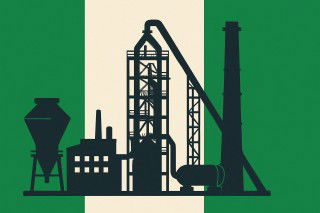In Cemtech's latest live webinar, grinding specialists and attendees from across the international cement industry gathered to discuss a variety of comminution practices and their particular strengths. Attendees had the opportunity to ask questions directly to our panellists and receive feedback to improve their grinding operations.
Technology suppliers, which included Christian Pfeiffer (Germany), Topnewer (China), Sinoma International Engineering (China) and Gebr Pfeiffer (Germany), each considered a different grinding method and explored case studies where the technology had been applied.
Christian Pfeiffer – combined grinding with a ball mill and HPGR
Tim Nowack of Christian Pfeiffer explored how a combined grinding system (ball mill and high-pressure grinding rolls) can be beneficial for reducing specific power consumption while maintaining product fineness, as compared to a conventional closed-circuit ball mill. In a Malaysian project, through the application of HPGR and a 400tph ball mill, the company achieved a fineness of 4162-4712cm2/g according to Blaine, at a total specific power consumption of 32.4-37.1kWh/t.
Topnewer – ball mill with ceramic grinding media
Topnewer’s Elite Yang considered the advantages of using ceramic grinding balls (CGB) instead of high-chrome steel inside a ball mill. The most significant factor is the energy savings, which occurs due to a 20 per cent drop in loading weight and results in a 10-15 per cent saving in power consumption.
While the company is considering pathways to use CGB in both chambers, currently they can only be used in one. They technology also benefits if pregrinding has already taken place before the ball mill, through the application of a roller press, for example.
Despite the required adjustments to the ball mill, the CGB technology has a significant effect. In an application for Bestway Cement’s Chakwal plant in Pakistan, CGB technology reduced the total loading weight in the ball mill by 47t.
Sinoma International Engineering – roller press finish grinding
Following this, Pan Pei of Sinoma International Engineering looked at roller press finish grinding compared to a combined grinding set-up. Despite concerns faced by consumers about cement produced from a finish grinding roller press, the results of a performance test on concrete produced from combined-grinding cement and finished-grinding cement showed an equivalent water demand and a similar liquidity. The particle size distribution of products from both methods is also equivalent.
Gebr Pfeiffer – MVR mill technology with active redundancy
Gebr Pfeiffer’s Bernd Henrich showcased the company’s MVR vertical roller mill, which has been designed to support high-capacity kiln lines. As such, the system can grind up to 1400tph of raw material or 600tph of cement. Another important feature of its design is its active redundancy feature, which can support up to six independent grinding rollers and their respective drive units. On the company’s C-6 unit, if one roller fails, the system can still reach 83 per cent of normal performance.
Through the mill’s GPlink feature operators can also access maintenance schedules and operational data remotely, particularly important in the current global scenario. An additional link to Gebr Pfeiffer’s support service means the unit can even be commissioned from off-site.
Next session
Following on from our successful grinding session, Cemtech will look at kiln systems in its next webinar on Wednesday, 8 July. Register for free here.

Huaxin’s acquisition takes the competition to Dangote’s door
Last week Huaxin announced that it had completed the acquisition of Holcim’s 83.81 per cent sta...